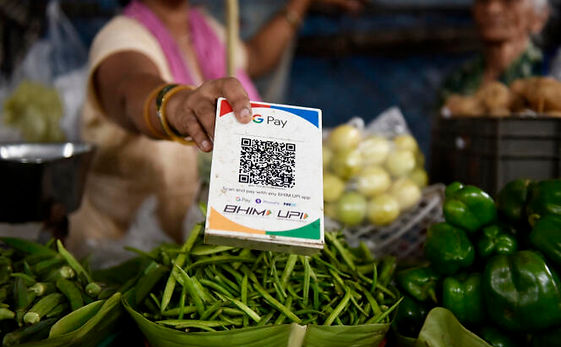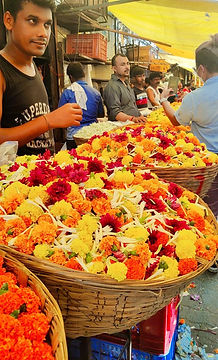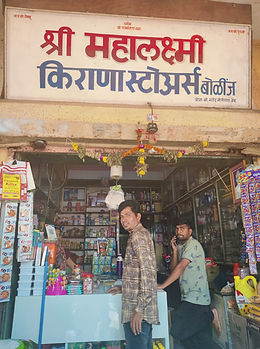




Project
From Coins to Clicks: Ethnographic Research to Pave the Way for Indian Street Vendors To Go Cashless
With internet and smartphone access expanding in India’s tier 2 & 3 cities, as well as rural areas, digital payment platforms like UPI (Unified Payments Interface) and online wallets are seeing a sharp rise in adoption. With benefits like easy tracking and accountability of payments, convenient cashflow management and loyalty savings/rewards, many mobile payment providers have entered the market with competitive offerings.
To capitalize on this growth, a leading instant messaging platform recognized a strategic opportunity to enter the payment space. They aimed to understand how local vendors and businesses integrate UPI and digital wallets into their daily operations.
While the project details are under NDA, this case study reveals only the key insights and learnings.
Key Details
Role
UX Researcher (2nd Lead)
Timeline
May-June 2022
Methodology
Field ethnography
Insights reporting
Team
4 UX Researchers
(Including 2 leads)
Overview
Problem
By examining their challenges and preferences, the project aimed to uncover ways to enhance the platform's payment services and drive wider adoption, motivating both traditional and forward-thinking vendors to embrace cashless transactions.
Outcome
We submitted a report that pinpointed the crucial barriers and enablers of digital payment adoption in India, leading to the creation of a targeted strategic roadmap for implementation over the next year.
Cultural Immersion
Culture Meets Currency:
A Close-Up Cultural Dive
With a US-based team unfamiliar with the nuances of Indian culture, the project required more than just data collection—it called for an experiential understanding of the everyday lives, motivations, and cultural practices that influence financial decisions.
It was thus critical to explore the diverse demographics and behaviors across Tier 1, 2, and 3 cities in India, where the platform’s major audience resided.
What was it about?
We traveled to Tier 1, 2, and 3 cities, and I remember how immersing ourselves in daily life helped us see things in ways we couldn’t have from a distance. In addition to the observations and interviews, this included trying out local dishes, having a cup of Masala Chai in people's homes, buying traditional jewelry and clothes, and almost gatecrashing a traditional Indian wedding!
Benefits of this approach
The differences in behavior between smaller towns and bigger cities became clearer when we lived through them ourselves. In smaller cities, cash as a mode of payment wasn’t just a convenience; it was part of the social fabric and generational habits. Meanwhile, in urban cities, the digital shift was more prominent, influenced by higher financial literacy and better access to mobile services.
What was in it for me?
As one of the project leads, I guided the team through India’s cultural complexities, mediating and breaking down the nuances for our foreign clients. This involved giving them an explanation of the influence of personal relationships on business and the impact of traditional customs on digital payment adoption.
This was more than just a research project, but rather an opportunity to I help my team see India through a different lens, one that was shaped by firsthand experience, and that’s something no amount of secondary research could have achieved, leading to a more culturally aware and user-centered approach for the platform.





Lessons Learned On Field
Reflecting on the best practices for:
In-home/shop interviews
01
This is Somebody's Personal Space/Place of Worship
To truly connect with users in their environment, it’s essential to honor their personal spaces and practices. Small, thoughtful actions—like sitting on the floor, taking off your shoes, pausing when customers come in or greeting elders—show respect and make people feel comfortable. These gestures help build trust and encourage open, honest conversations.
02
Build Rapport
To ease the intimidation of meeting new people, we focused on creating a welcoming atmosphere. Engaging in casual chats, interacting with family members, playing with kids, and sharing in homemade meals helped to break the ice. These personal touches fostered trust and made everyone feel comfortable.


03
Ensuring Focused 1:1 Discussions
o avoid overwhelming users, we ensured that each interaction was one-on-one. Clients were asked to channel their questions through the moderator, which allowed for focused and comfortable discussions without confusion.
Lessons Learned On Field
Reflecting on the best practices for:
In-field Observations
01
Keep it Short and Simple
To respect the business owner's routine and sales, we made sure not to interrupt by blending into the background or pausing our activities whenever a customer approached. By waiting until they had passed and engaging without any devices in between, we ensured the process was smooth and unobtrusive.
02
Preventing Overcrowding and Distraction
To ensure we didn’t overwhelm vendors or obstruct their stalls, we avoided using devices or taking videos that could attract unwanted attention. By staying discreet, we kept the focus on their sales and allowed passersby to move freely. We only photographed from a distance for documentation purposes.
03
Every Detail Matters
While conversations provide valuable insights, observing vendors’ daily routines unveils a deeper layer of cultural nuances and preferences. Details like traditional bookkeeping methods offer a window into their innate behaviors, revealing aspects that words alone might overlook and delivering a more profound understanding of their practices.
04
Showing Appreciation
To show our heartfelt thanks and make vendors feel appreciated, we made a point of buying something from them. This small but meaningful gesture not only expressed our gratitude but also ensured they felt valued and positive about our interaction




